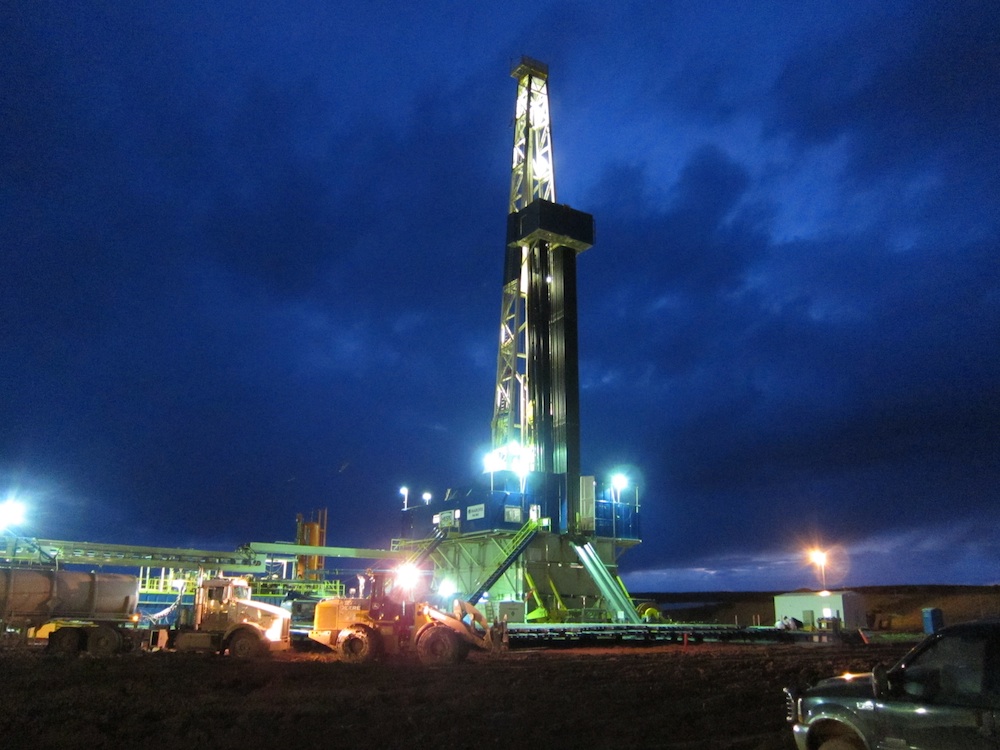
SAN FRANCISCO — Nuclear waste could one day be disposed of by injecting it into fracking boreholes in the Earth, at least if one scientist's idea takes hold.
The method, presented here Monday (Dec. 9) at the annual meeting of the American Geophysical Union, would mix nuclear waste with other heavy materials, and inject it a few miles below the Earth's surface into drilled holes. The key is that, unlike fluids used in most hydraulic fracturing, or "fracking," the nuclear slurry would be heavier than the rock in which it is injected.
"It's basic physics here — if it's heavier than rock, the fracture will propagate down," said study co-author Leonid Germanovich, a physicist and civil and environmental engineer at the Georgia Institute of Technology. In theory, then, the nuclear waste would inch downward, going deeper into the Earth over time. [5 Everyday Things That Are Radioactive]
But the idea is still theoretical, and at least one expert thinks there are too many practical and safety concerns for the scheme to work.
"I can't see it being a feasible concept, for many reasons," said Jens Birkholzer, head of the Nuclear Energy and Waste Program at Lawrence Berkeley National Laboratory in Berkeley, Calif.
Contentious issues
Hydraulic fracturing, or fracking, involves drilling a deep well more than a mile (1.6 kilometers) below the surface, and injecting fluids into the hole at high pressure. This creates cracks or fissures through which the fluid can propagate. Environmentalists fear that fracking can contaminate the water supply. Other studies have found that the process of injecting the wastewater from fracking into the Earth can trigger small-scale earthquakes. Advocates of the process in the oil and gas industry, meanwhile, contend that fracking is safe and that fears about the process have been overblown.
Sign up for the Live Science daily newsletter now
Get the world’s most fascinating discoveries delivered straight to your inbox.
Nuclear waste disposal causes controversy of its own. The government initially planned to bury its long-term nuclear waste — which can be radioactive for 100,000 years — deep in mines underneath Yucca Mountain in Nevada, but after almost 40 years of opposition from environmentalists, the plan was put on hold indefinitely.
Theoretical work
Germanovich had wondered whether fracking could safely dispose of nuclear waste, as long as the fluid went downwards into the rock and not back up into surface water.
The team used a theoretical model to describe the nuclear slurry's trajectory through the rock, then looked through past research and found that the physics of the problem had been well studied in the lab. As long as fluids are pumped at the proper rate, the heavy slurry of radioactive waste would fall straight down in a long, finger-like projection towards the Earth's core, and it wouldn't spread outward, Germanovich said.
The team is now partnering with an outside company to do small-scale field experiments (with non-radioactive materials).
The basic physics make sense, Birkholzer said. "If it's heavy enough, then it shouldn't come up," he told LiveScience.
Many obstacles
But that is only one of many obstacles.
Researchers would need to make sure the boreholes were placed correctly, so that there was no chance the nuclear waste could somehow contaminate an underground water supply.
And because these materials will be radioactive for more than 100,000 years, it's important to find a solution that won't fail a mere 10,000 or 20,000 years down the line. And with such deep boreholes, there aren't good chances to inspect the subsurface or the geology of the rock, Birkholzer said.
In addition, the work of injecting the radioactive slurry into the borehole could be tricky.
"You really don't want to be close to this material," Birkholzer said. "The whole worker-safety issue is to me a big concern." Even current fracking projects occasionally have accidents, he said.
For some nuclear waste, the government is considering drilling deep, wide boreholes and burying the material miles below the Earth's surface. But those proposals would encase the radioactive material in thick, shielding canisters that could be safely accessed if needed, Birkholzer said.
Follow Tia Ghose on Twitter and Google+. Follow us @livescience, Facebook & Google+. Original article on LiveScience.

Tia is the managing editor and was previously a senior writer for Live Science. Her work has appeared in Scientific American, Wired.com and other outlets. She holds a master's degree in bioengineering from the University of Washington, a graduate certificate in science writing from UC Santa Cruz and a bachelor's degree in mechanical engineering from the University of Texas at Austin. Tia was part of a team at the Milwaukee Journal Sentinel that published the Empty Cradles series on preterm births, which won multiple awards, including the 2012 Casey Medal for Meritorious Journalism.









